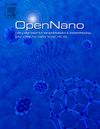Osteogenic differentiation of mesenchymal stem cells in cell-laden culture of self-assembling peptide hydrogels
Q2 Pharmacology, Toxicology and Pharmaceutics
引用次数: 0
Abstract
Mesenchymal stem cell (MSC) osteogenic differentiation requires scaffolds to support multiple stages of growth and differentiation signals. Fluorenyl-9-methoxycarbonyl diphenylalanine (Fmoc-FF) peptides self-assemble to create 3D nanofibers. Here, we cultured MSC in 2D and 3D Fmoc-FF layers to support their osteogenic differentiation. The stiffness of the hydrogels was tunable between 100 and 10,000 Pa which allows precise modulation of the cellular microenvironment. Scaffold stiffness impacted cell viability which softer scaffolds (100 Pa) favored higher viability. MSC formed spheroids in 3D hydrogel and showed spread morphology in 2D overlayers. Our results demonstrate that the Fmoc-FF 3D cultures significantly enhanced osteogenic differentiation, as evidenced by increased calcium deposition, elevated phosphatase activity, and the secretion of osteocalcin. We propose that the peptides provide integrin-binding sites that activate a cytoplasmic feedback loop essential for differentiation. These findings suggest that self-assembled Fmoc-FF peptide hydrogels, is a promising platform for bone tissue engineering applications.
自组装肽水凝胶培养中间充质干细胞的成骨分化
间充质干细胞(MSC)的成骨分化需要支架来支持多阶段的生长和分化信号。氟酰-9-甲氧羰基二苯丙氨酸(Fmoc-FF)肽自组装创建三维纳米纤维。在这里,我们在2D和3D Fmoc-FF层中培养MSC以支持其成骨分化。水凝胶的硬度在100到10,000 Pa之间可调,从而可以精确调节细胞微环境。支架刚度影响细胞活力,较软的支架(100 Pa)有利于较高的活力。骨髓间充质干细胞在三维水凝胶中形成球形,在二维复层中呈扩散形态。我们的研究结果表明,Fmoc-FF 3D培养显著增强了成骨分化,钙沉积增加,磷酸酶活性升高,骨钙素分泌增加。我们提出肽提供整合素结合位点,激活分化所必需的细胞质反馈回路。这些发现表明,自组装Fmoc-FF肽水凝胶是一个很有前景的骨组织工程应用平台。
本文章由计算机程序翻译,如有差异,请以英文原文为准。
求助全文
约1分钟内获得全文
求助全文
来源期刊

OpenNano
Medicine-Pharmacology (medical)
CiteScore
4.10
自引率
0.00%
发文量
63
审稿时长
50 days
期刊介绍:
OpenNano is an internationally peer-reviewed and open access journal publishing high-quality review articles and original research papers on the burgeoning area of nanopharmaceutics and nanosized delivery systems for drugs, genes, and imaging agents. The Journal publishes basic, translational and clinical research as well as methodological papers and aims to bring together chemists, biochemists, cell biologists, material scientists, pharmaceutical scientists, pharmacologists, clinicians and all others working in this exciting and challenging area.
 求助内容:
求助内容: 应助结果提醒方式:
应助结果提醒方式:


